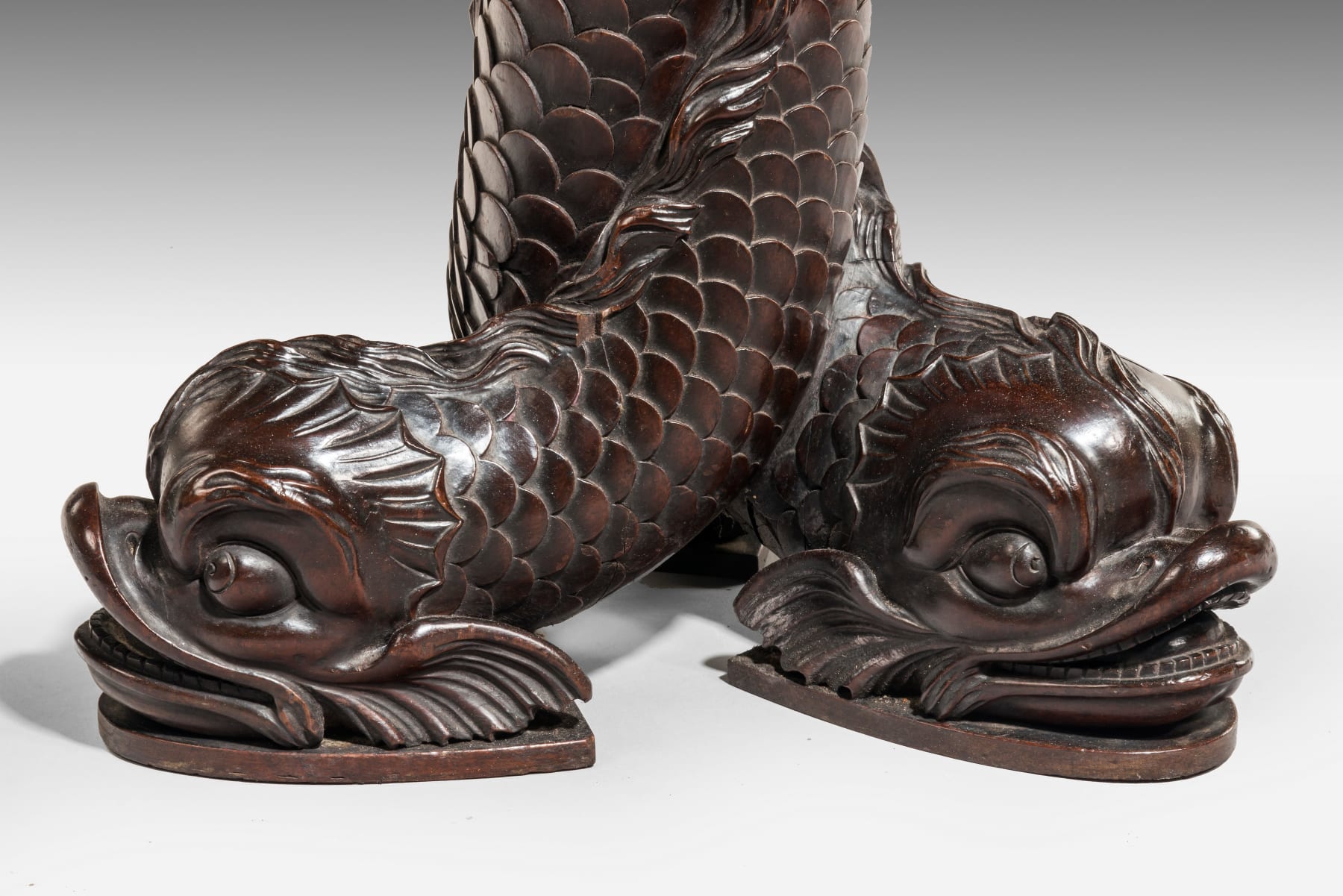Regency Carved Mahogany Dolphin Table
ENGLAND, 1810-20
76 x 43 x 37 cm
Further images
With a rectangular marble inset top, set into a mahogany surround decorated with a gadrooned edge, supported by three carved entwined dolphins.
Dolphin motifs are rich with symbolic meaning, being drawn from the designs of antiquity whilst having contemporary references in the early nineteenth century. The dolphin motif alludes to Lord Nelson’s maritime victories at the Battle of Trafalgar in 1805; and at the Battle of the Nile in 1798.
In addition, the ‘Dauphin of France’ was the title given to the eldest son of a king of France, the heir apparent to the French crown, from 1350 to 1791 – when the title was abolished by the 1791 Constitution; and again from 1824 to 1830. ‘Dauphin’ is French for ‘dolphin’, a reference to the depiction of the mammal on their coat of arms.
Ackermann’s Regency Furniture & Interiors depicts a plate from The Repository of Arts, dated 1825, which shows a ‘Table, Chair and Window-Seat’. The table is: ‘supported by a tripod of dolphins, without the aid of a stem, as usually introduced in the lately prevailing manner…’ (see Ackermann’s Regency Furniture & Interiors, Text by Pauline Agius, Introduction by Stephen Jones (The Crowood Press, 1984), p.161, Plate 148).
Gillows of Lancaster and London: Robert Gillow (1704–1772) was an English furniture manufacturer, who started out as an apprentice joiner in c.1718 before founding the luxury furniture and furnishings firm ‘Gillow of Lancaster’ in 1730. The firm also had a London workshop in Thames Street, and rapidly established a reputation for supplying high quality furniture and furnishings to the richest families in the country. In 1764, a permanent London branch of Gillow’s was established at 176 Oxford Road, now Oxford Street, by Robert’s son, Thomas Robert Gillow (1745–1793), and William Taylor. Following Robert’s retirement in 1769, the business was continued by two of his sons: Richard (1734–1811) and Thomas Robert. For over a century, the firm was known for its luxury furniture and furnishings. An unusual portable writing drawer, dated c.1810-20 (the same dates as this table) from Leighton Hall, the home of Richard Gillow II, is illustrated in Susan E. Stuart’s Gillows of Lancaster and London, 1730-1840 (Antique Collectors’ Club, 2008), plate 677, p.128. It has the same gadrooning as appears on our dolphin table.












